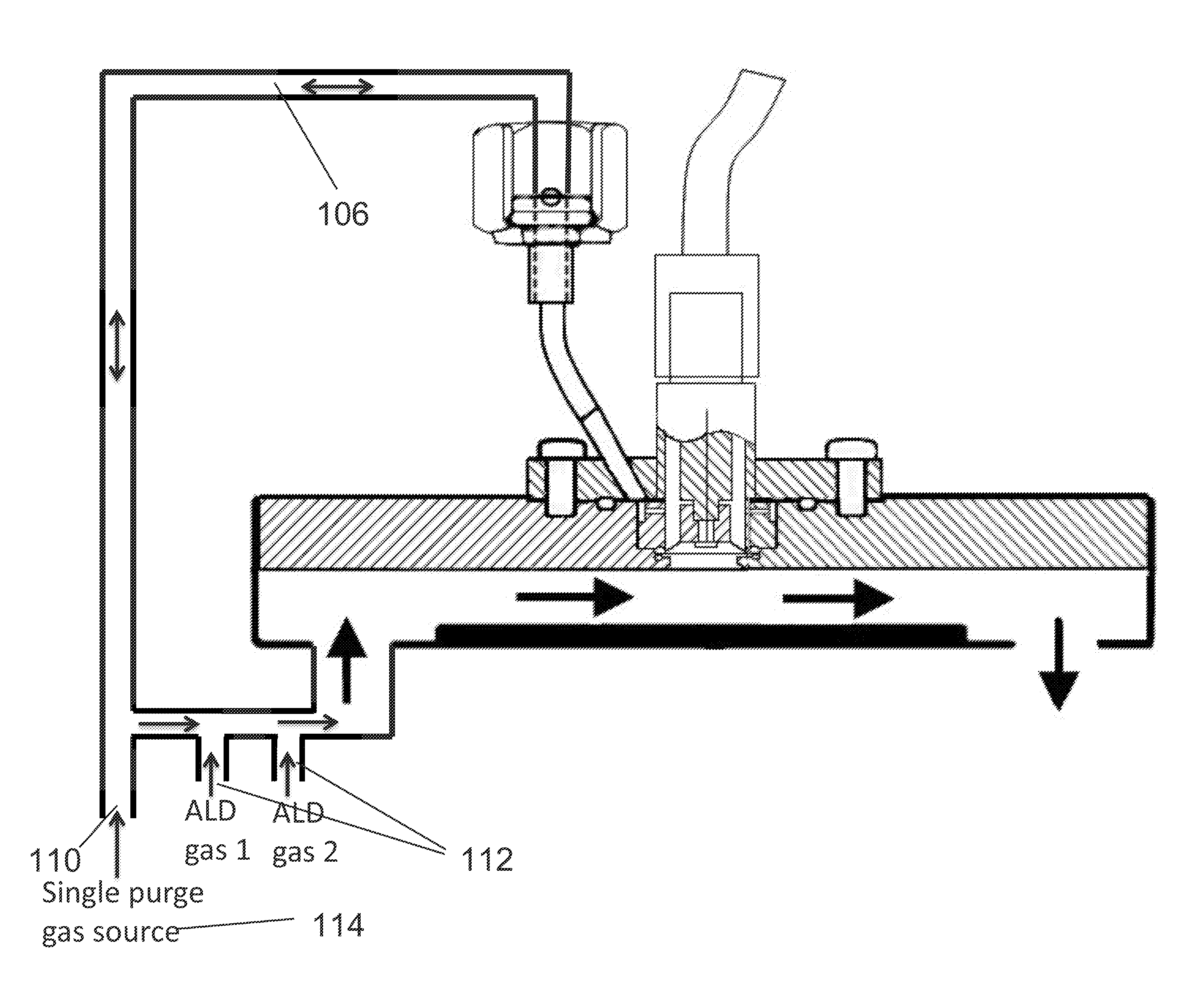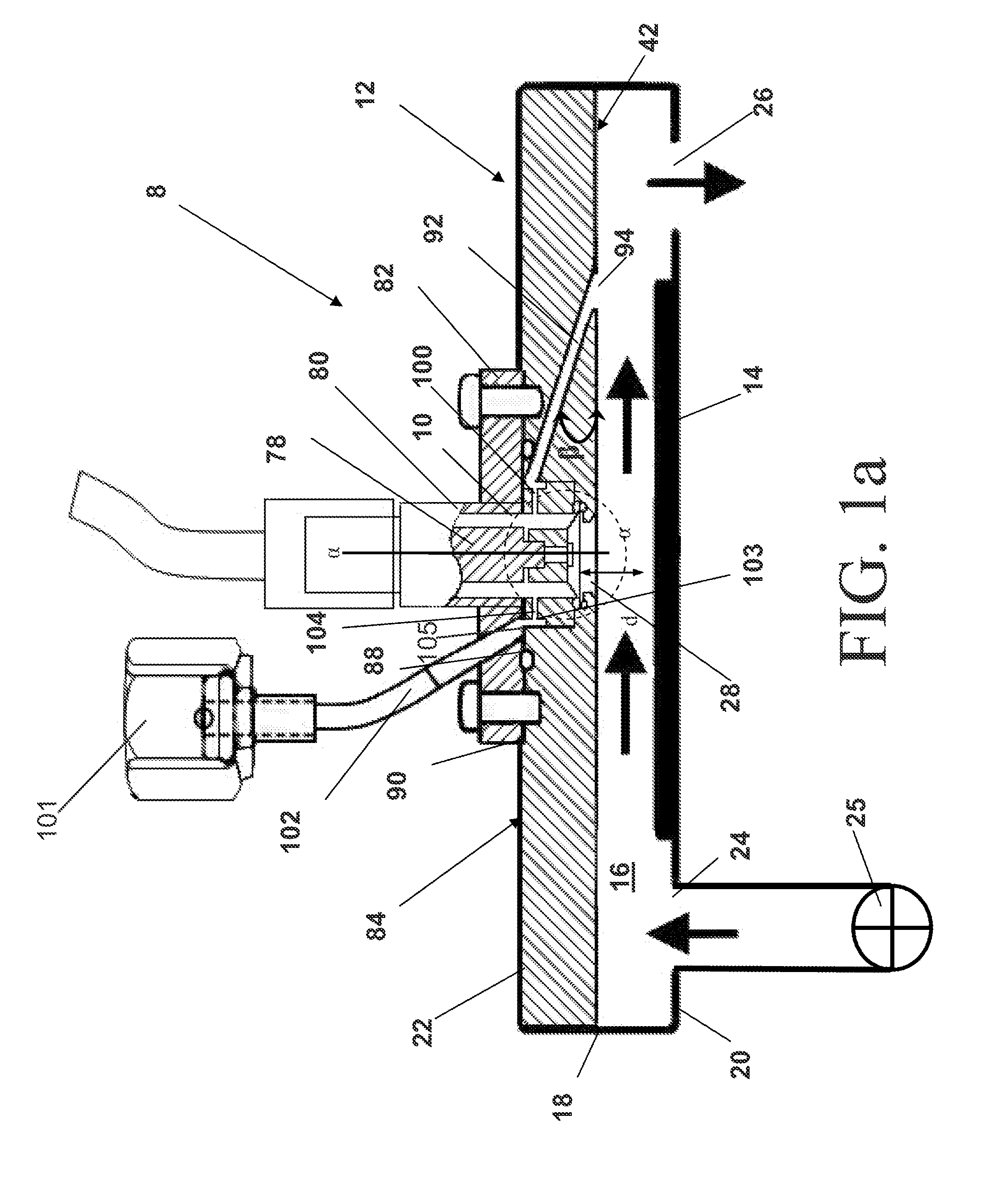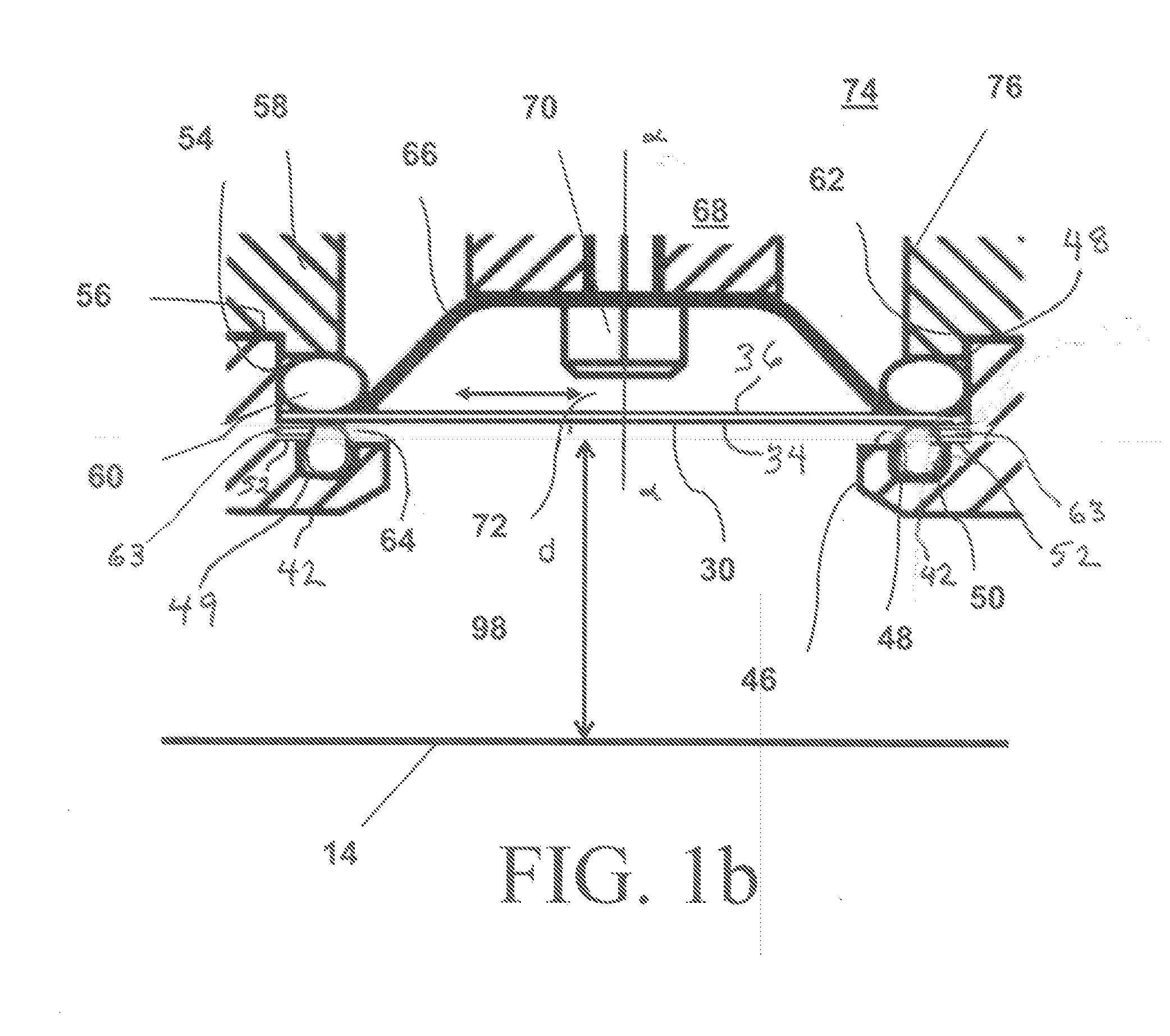Micro-balance sensor integrated with atomic layer deposition chamber
a micro-balance sensor and atomic layer deposition technology, applied in chemical vapor deposition coating, metal material coating process, coating, etc., can solve the problems of inability to achieve accurate measurements of tiny changes in mass during ald, inability to achieve tight temperature control, and inability to reduce temperature-induced variations from mass balances. , to achieve the effect of reducing the modification of the ald instrument, facilitating installation and minimal disruption of the ald process
- Summary
- Abstract
- Description
- Claims
- Application Information
AI Technical Summary
Benefits of technology
Problems solved by technology
Method used
Image
Examples
example
[0083]To illustrate the application of the integral QCM design, of the invention, a commercially available aluminum slab lid of an ALD (for example, a Savannah 200 ALD (Cambridge Nanotech, Inc., Cambridge, Mass.) was modified to accommodate two oscillating crystal fixtures. Compression seal sleeves and apertures were machined to appropriate dimensions to produce O-ring compression compatible with published O-ring specifications and QCM crystal thickness.
[0084]Electrical connection to the front of the gold plated QCM crystals is achieved through direct contact with the aluminum ALD lid by means of edge 52, which is in turn grounded to the Connector shield by the feed through. Electrical connection to the exterior surface of the QCM crystal was achieved with a resilient / spring retainer electrode modified and fitted on a connector shaft. The connector fixture was bolted onto the lid with mounting plate and fasteners were inserted in drilled and tapped holes. Tightening of the fasteners...
PUM
| Property | Measurement | Unit |
|---|---|---|
| temperatures | aaaaa | aaaaa |
| thickness | aaaaa | aaaaa |
| temperature coefficient | aaaaa | aaaaa |
Abstract
Description
Claims
Application Information
 Login to View More
Login to View More - R&D
- Intellectual Property
- Life Sciences
- Materials
- Tech Scout
- Unparalleled Data Quality
- Higher Quality Content
- 60% Fewer Hallucinations
Browse by: Latest US Patents, China's latest patents, Technical Efficacy Thesaurus, Application Domain, Technology Topic, Popular Technical Reports.
© 2025 PatSnap. All rights reserved.Legal|Privacy policy|Modern Slavery Act Transparency Statement|Sitemap|About US| Contact US: help@patsnap.com



